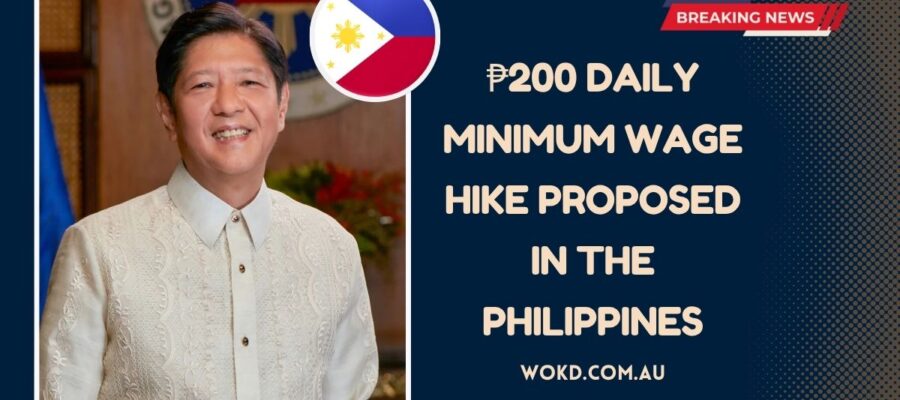A ₱200 daily wage increase has been proposed in the Philippines, sparking national discussions among workers, labor unions, employers, and lawmakers.
If approved, this would mark one of the largest wage adjustments in recent history, potentially improving the financial well-being of millions of Filipino workers.
What Is the ₱200 Wage Increase Proposal?
Filed in early 2025 and currently under Senate Committee on Labor review, the proposed increase would apply across all private sector workers, regardless of industry. The goal is to mitigate inflation’s impact on purchasing power, especially in urban areas like Metro Manila, where living costs have continued to soar.
Highlights of the Proposal:
- ₱200 across-the-board increase to daily minimum wage
- Aims to address stagnant wage growth and rising costs
- Public hearings and consultations underway
- Potential implementation as early as Q4 2025
Estimated Wage Impact by Region
The wage hike will vary based on current regional rates, but estimates give a clear picture of potential adjustments:
| Region | Current Daily Minimum Wage | Proposed Increase | New Estimated Daily Wage |
|---|---|---|---|
| Metro Manila | ₱573 – ₱610 | ₱200 | ₱773 – ₱810 |
| CALABARZON | ₱550 – ₱585 | ₱200 | ₱750 – ₱785 |
| Central Luzon | ₱545 – ₱586 | ₱200 | ₱745 – ₱786 |
| Western Visayas | ₱430 – ₱480 | ₱200 | ₱630 – ₱680 |
| Davao Region | ₱410 – ₱460 | ₱200 | ₱610 – ₱660 |
Note: These are estimated figures pending approval and final announcements from the regional wage boards.
Why This Wage Increase Is Important Now
With inflation pushing up the cost of essentials—like rice, transportation, electricity, and fuel—low-income households are under pressure. Advocates of the proposal argue that this wage hike will:
- Lift workers above the poverty line
- Increase household purchasing power
- Stimulate local economic activity
- Help close the gap between wages and the rising cost of living
Labor Law Reforms Underway
The ₱200 wage proposal is part of a broader legislative reform that aims to modernize Philippine labor policy. Updates currently being considered include:
- Mandatory wage reviews every two years
- Tax incentives for companies that adopt voluntary wage increases
- Compliance exemptions for distressed or micro-enterprises
These reforms aim to balance the interests of both workers and business owners, ensuring sustainability and fairness in the evolving labor market.
What Employers Should Do Now
Employers—particularly SMEs—should begin financial planning and modeling to prepare for possible compliance. The government is likely to introduce:
- Subsidies
- Tax relief packages
- Phased implementation options
Being proactive with payroll assessments and staying informed on regional wage board decisions will be essential for smooth adaptation.
Projected Timeline for Implementation
If the legislative process stays on track, the ₱200 daily wage increase could be implemented by late 2025, possibly in phases depending on region and sector.
By planning early, both employers and employees can ensure they are ready for the change.
The proposed ₱200 daily minimum wage increase is a bold step toward protecting workers from inflation and stagnating incomes.
If passed, it could raise standards of living and drive economic momentum across the Philippines. Workers, employers, and policymakers must stay engaged as this proposal moves through the legislative process.
FAQs
Who will benefit from the ₱200 wage hike?
All private sector workers, including part-time and contractual employees, are expected to benefit if the proposal is passed.
When will the increase take effect?
If approved, the hike could begin in Q4 2025, possibly implemented in stages depending on industry and location.
Will there be exemptions for some businesses?
Yes, distressed businesses may apply for exemptions through their regional wage boards, subject to approval.

